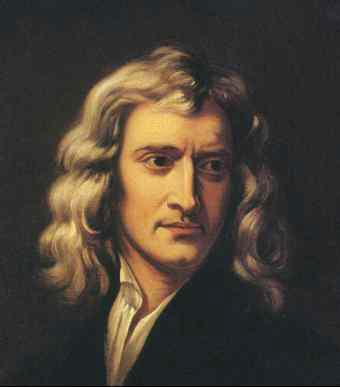The explosion in the sciences that took place in the 17th and 18th centuries revolutionized not only the way we think of our world, but of time and space itself. Much of this is owed to individuals like Sir Isaac Newton, a man whose theories came to form the basis of modern physics. Though much of his theories would later come to be challenged with the discovery of relativity and quantum mechanics, they were nonetheless extremely influential because they gave later generations a framework. It is to him, for example, that we are indebted for the notions of Absolute Time and Absolute Space, and how the two were thought to be separate aspects of objective reality.
In his magnum opus, PhilosophiæNaturalis Principia Mathematica (Mathematical Principles for Natural Philosophy), Newton laid the groundwork for the concept of Absolute Space thusly:
“Absolute space, in its own nature, without regard to anything external, remains always similar and immovable. Relative space is some movable dimension or measure of the absolute spaces; which our senses determine by its position to bodies: and which is vulgarly taken for immovable space … Absolute motion is the translation of a body from one absolute place into another: and relative motion, the translation from one relative place into another.”
In other words, Absolute Space is the study of space as an absolute, unmoving reference point for what inertial systems (i.e. planets and other objects) exist within it. Thus, every object has an absolute state of motion relative to absolute space, so that an object must be either in a state of absolute rest, or moving at some absolute speed.
These views were controversial even in Newton’s own time. However, it was with the advent of modern physics and the Theory of Special Relativity, that much of the basis for Newtonian physics would come to be shattered. In essence, special relativity proposed that time and space are not independent realities but different expressions of the same thing. In this model, time and motion are dependent on the observer and there is no fixed point of reference, only relative forms of motion which are determined by comparing them to other points of reference.
However, it would be fair to say that it was Newton’s own definitions of space and time as independent phenomena that allowed for the development of physics as we know it today. By giving physicists clear definitions to work with and challenge, later generations of scientists like Einstein were able to express clearly how space was not absolute since it itself was always in motion, and how one could not divorce space from time.
We have written many articles about absolute space for Universe Today. Here’s an article about what is space, and here’s an article about how cold space is.
If you’d like more info on absolute space, check out an article about Isaac Newton’s “Absolute Space”. Also, here’s an article about Absolute Time and Space.
We’ve also recorded an entire episode of Astronomy Cast all about Space Elevators. Listen here, Episode 144: Space Elevators.
Sources:
http://en.wikipedia.org/wiki/Absolute_time_and_space
http://en.wikipedia.org/wiki/Sir_Isaac_Newton
http://plato.stanford.edu/entries/newton-stm/
http://en.wikipedia.org/wiki/Special_relativity
http://novan.com/spcenrgy.htm

